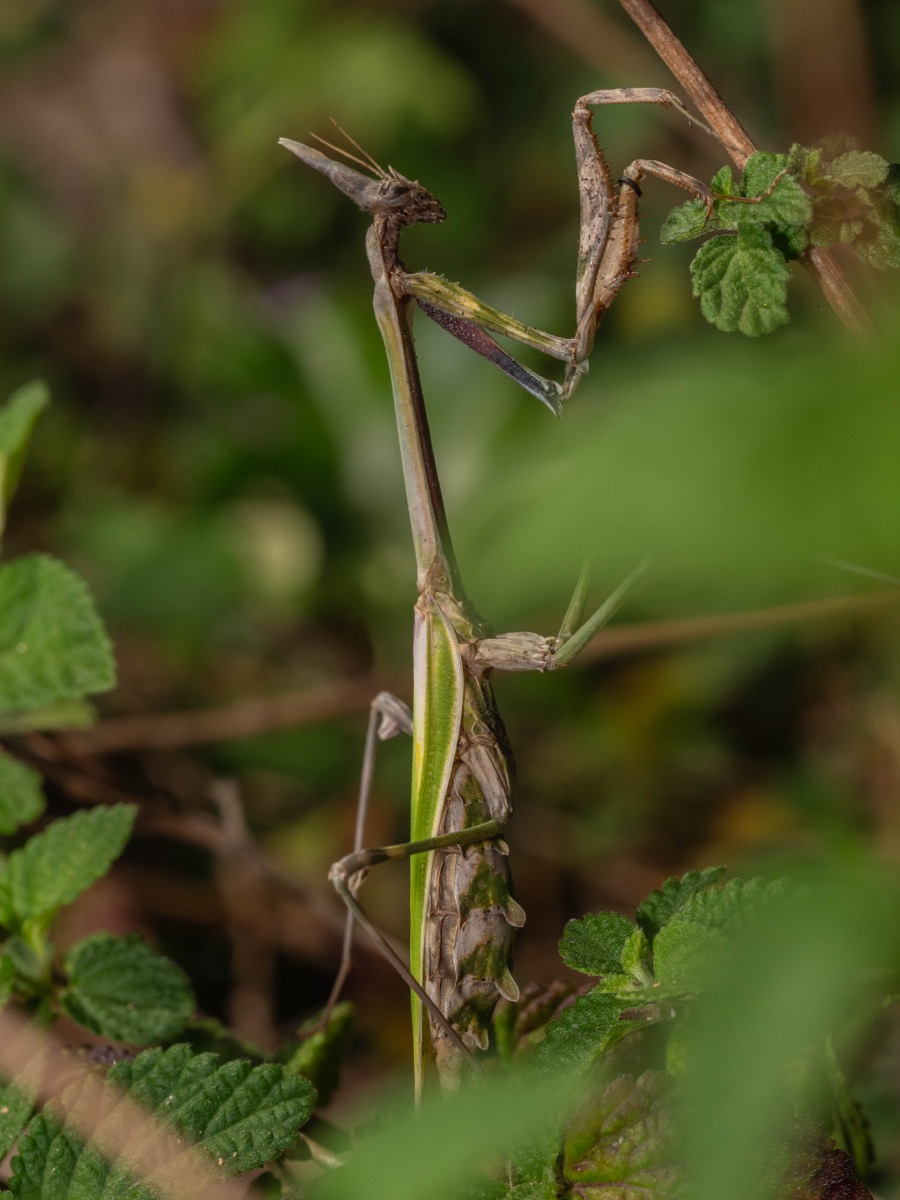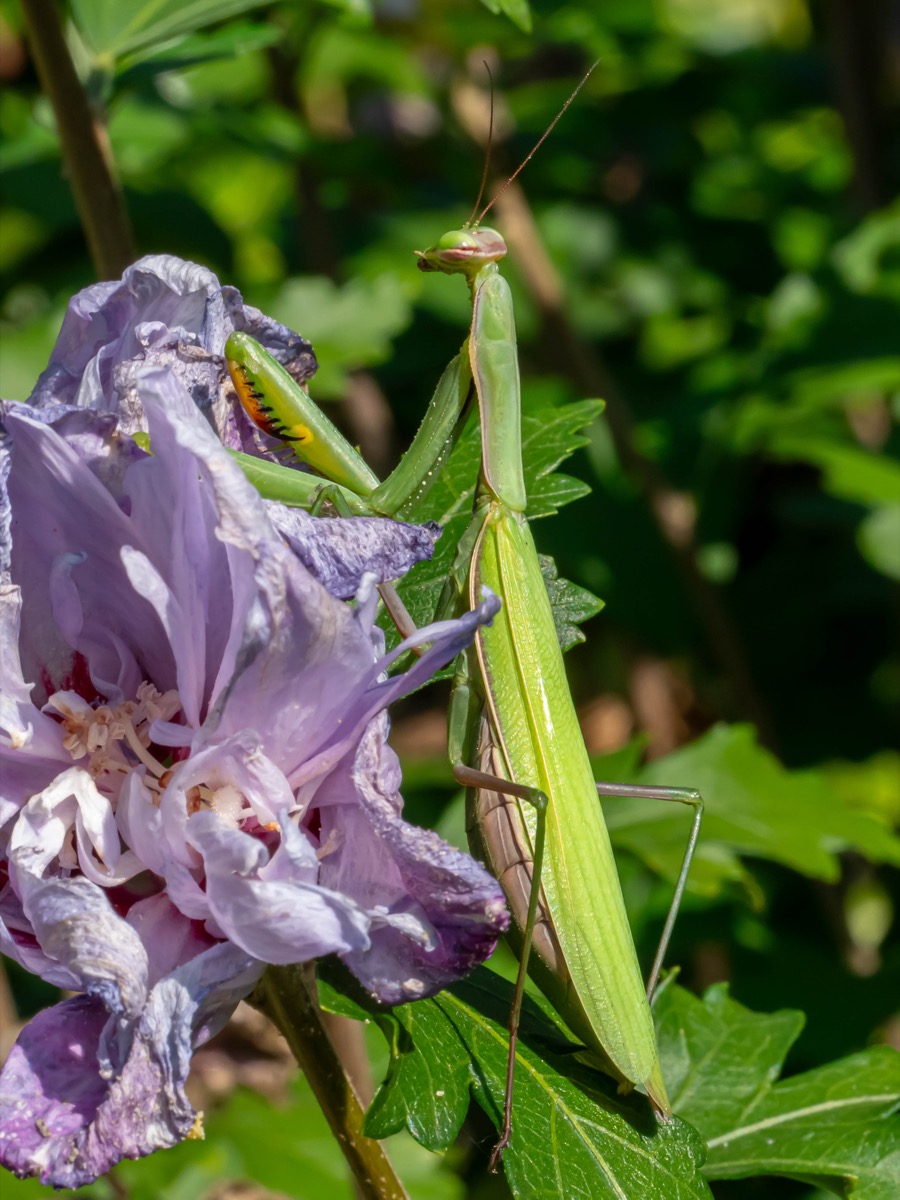Order Mantodea
Mantodea is an order of insects comprising 15 families, 430 genera, and more than 2,400 species.
Members of this order are found in temperate and tropical regions. Most species belong to the family Mantidae.
In modern phylogenetic classifications, this order belongs to the superorder Polyneoptera, along with Blattodea (cockroaches).
Characteristics
- Raptorial forelegs folded like arms (adapted for capturing prey)
- Triangular head with great mobility and large compound eyes
- Elongated thorax (greatly extended prothorax)
- Two pairs of wings: leathery forewings and membranous hindwings (in adults)
- Slender body, often well camouflaged in vegetation
Habitat
Mantodea are found in:
- Dry scrublands, warm meadows, fallow fields
- Hedges, edges of forests, gardens, flowered lawns
- Tropical and subtropical regions (highest diversity)
- Low to medium vegetation where they ambush prey
Biology
- Strictly predatory at all life stages
- Ambush hunting; prey is seized with a lightning-fast strike of the raptorial legs
- Highly developed stereoscopic vision, movement detection
- Eggs laid in a frothy ootheca attached to vegetation or rocks
- Nymphs resemble adults but lack wings (hemimetabolous development)
Notable Families
- Mantidae – The most represented family, includes Mantis religiosa (European mantis)
- Amorphoscelididae, Empusidae, Thespidae – Exotic or tropical families
Special Features
- Sexual cannibalism common in some species during or after mating
- Remarkable mimicry abilities (leaves, twigs, flowers…)
- Spectacular threat displays in some species (spread wings, sudden movements)
- Some species are locally protected (e.g., Mantis religiosa in Europe)

